Breeding Journal DataSheet for Pseudochromis cyanotaenia
General Species: Pseudochromis cyanotaenia
Social Structure: male female, but not really forming "pairs".
Size of Individuals: both around 2"
Age of Individuals: unknown (wild caught)
Date added to Tank: 12/7/2007
Broodstock Tank Details Size of Tank: 24 gallon nanocube - female held in a plastic breeder box from Florida Aqua Farms
Substrate Details: live sand
Filtration Details: stock nanocube filtration
Water Changes: 25% weekly
Water Temperature: 80F
Lighting: stock power compacts
Lighting Cycle: maybe 13 hours on, on a timer (this is the macro tank, so I tended to leave lights on longer)
Other Tank Inhabitants: Clowns, Mandarins, Scooters, and possibly many others as fish were rotated in and out.
Broodstock Feeding Details Food Types: Mostly they ate frozen foods but would also take pellets quite readily.
Feeding Schedule: multiple times per day
Spawning Details Date of First Spawn: 2/5/2008
Spawn Time of Day: midday
Dates of Consecutive Spawns: sometimes it was hard to tell. I also technically controlled when the could spawn because I had to purposely release the female. Second confirmed spawn was 3/5/2008. The most successful run I had was spawned on 6/15/2008, sometime before 3:00 PM.
CourtShip Details: male dances like crazy for the female, colors on male become extremely intense and vibrant. Stunning to see. Male lures female into cave to spawn, and later chases her away. I generally had to manually catch the female and return her to her private "holding cage" after the spawn.
Egg Size: tiny. never got to measure, but probably only 1-2 mm in diameter at most.
Egg Color: white-ish
Egg Count: hundreds, in a ball.
Hatch Details Hatch Date: first hatch verified 3-9-2009. Many others along the way. The most successful run I had hatched on 6/18/08
Hatch Time of Day: 11:45 PM
# Days after Spawn: 4
Larve Description: They are positively phototrophic, and are 3-4 mm in length. Just a touch smaller than baby
Amphiprion ocellaris, but larger than newly hatched
Elactinus multifaciatus. They have fully formed eyes, mouth, and gut.
Larval Tank Details Temperature: 82F
Size of Larval Tank: 5 gallon bucket (white)
Substrate Details: none
Other Tank Decor: none
Filtration Details: none
Lighting: small under shelf flourescent light resting across bucket
Lighting Cycle: probably 18 hours on
Water Changes: none
Larval Feeding Details Food Types: Rotifers, possibly Tigriops copepod nauplii. Added in baby brine shrimp at 8-9 days post hatch
Feeding Schedule: Utilized greenwater technique.
Metamorphosis/Settlement Date of Settlement Start: - Was right around 27 days..but I think the last larvae died AT settlement.
Days after Hatch:
Date of Settlement End:
Description of Fry:
Grow-Out Tank Details Temperature:
Size of Grow-Out Tank:
Substrate Details:
Other Tank Decor:
Filtration Details:
Lighting:
Lighting Cycle:
Water Changes:
Size at Transfer:
Age at Transfer
Grow-Out Feeding Details Food Types:
Feeding Schedule:
Additional Information Miscellaneous Information:
Originally documented on MOFIB at -
http://www.marinebreeder....b/viewtopic.php?t=1569 It's important to note that this experience offered third party proof to some research work Wittenrich had published about sex reversal in dottybacks from the "terminal sex". P. cyanotaenia is considered protogynous, starting out as female, with males being the terminal sex.
To create my pair, I actually purchased 2 males. Given the truly drab color of the female, it is rarely imported, and this is NOT a popular fish to start with. Thus, I was rather fortuante to find 2 at all. At any rate, the fish were allowed to see each other and interact through the breeder basket, but could not physically cause harm. The result was that a full proven sex reversal occurred in 65 days. I am currently re-attempting this with what is possibly another pair of Pseudochromis cyanotaenia, but could be a related species P. coccinicauda. I also am actually trying this sex reversal pairing with my 2 sunrise Dottybacks (P. flavivertex). Time will tell how this works out!
My first run in the 5 gallon bucket (the March run) failed due to a failed heater. In fact, I've now had a half dozen or so Stealth Heaters fail on me in the past few years. Thinking I'm going to need to switch brands. The second run made it to 27 days...I know I was darn close to settlement but sadly I don't have the proof we'd all want. Of course, my efforts to rear this species ended ubruptly one day when the female jumped out of the breeder basket, into the main tank, and was murdered quite quickly by the male.
Here's pictures: 2 males drip acclimating in the bucket 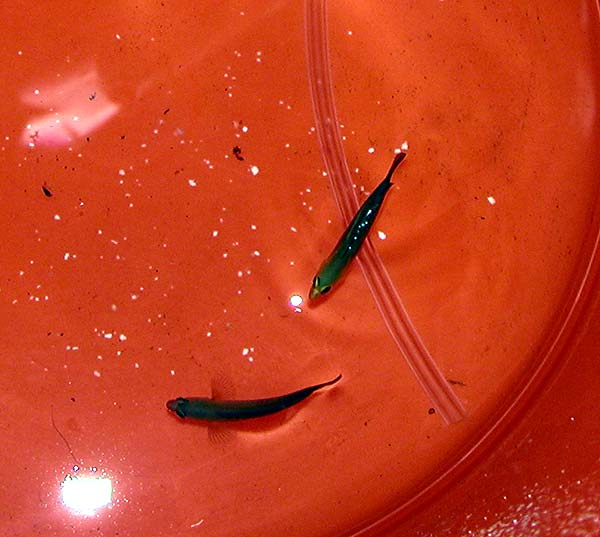 after 18 days of separation
after 18 days of separation 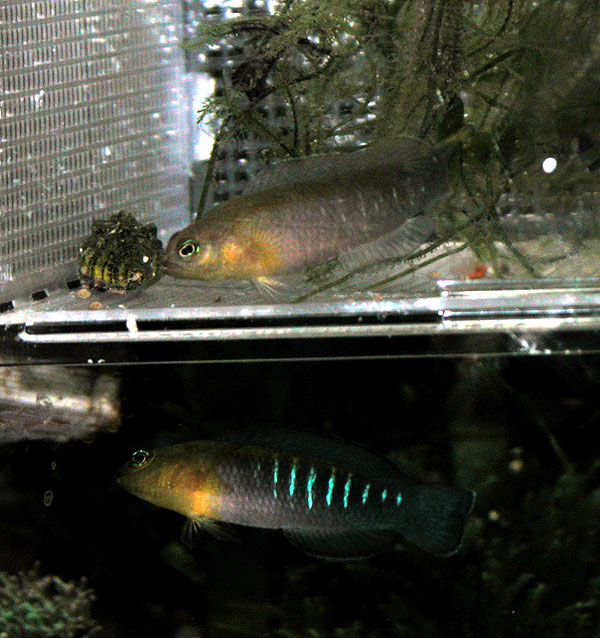 after 2.5 months (this is courtship colors on the male)
after 2.5 months (this is courtship colors on the male) 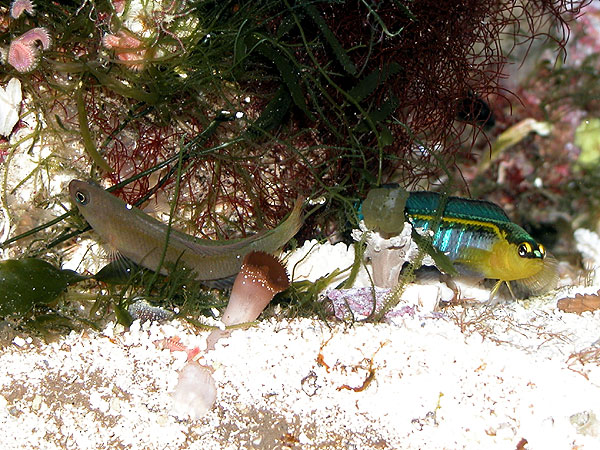 Male guarding eggs in the reef tank
Male guarding eggs in the reef tank 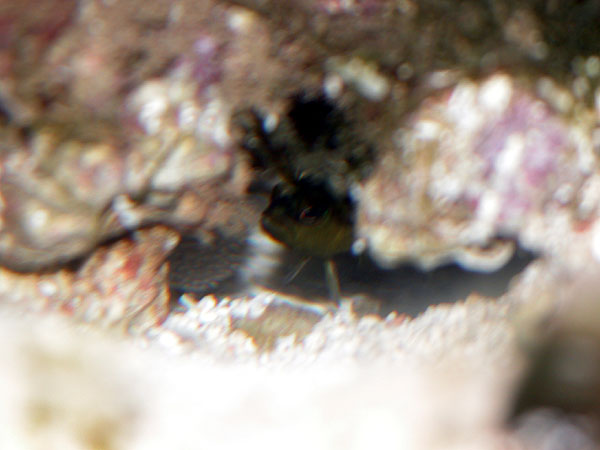 Eggs from a botched spawn at 10X
Eggs from a botched spawn at 10X 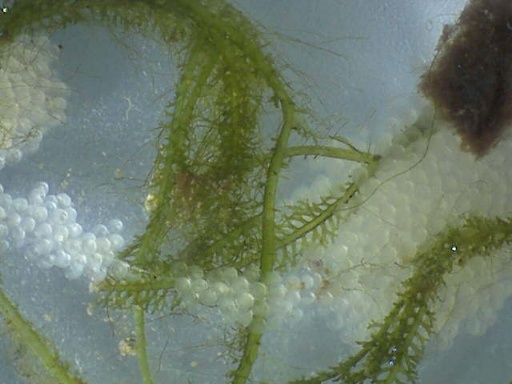 Eggs from a botched spawn at 60X
Eggs from a botched spawn at 60X 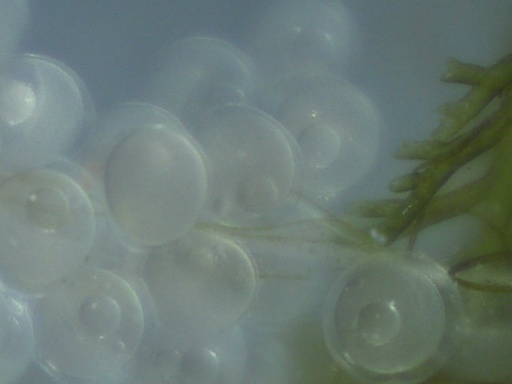 Newly hatched larvae at 10X
Newly hatched larvae at 10X 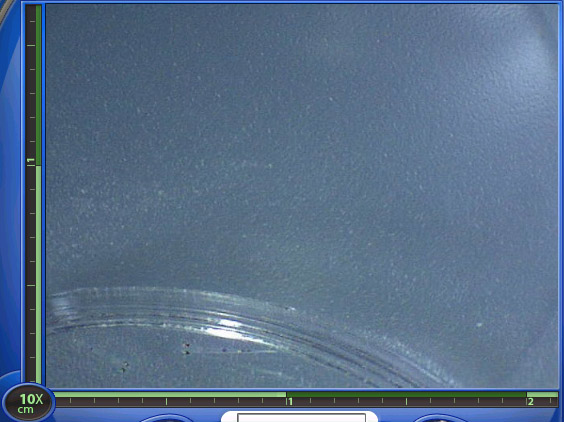 1 day post hatch Pseudochromis cyanotaenia next to a 1 day old Mandarin (Synchiropus splendidus)
1 day post hatch Pseudochromis cyanotaenia next to a 1 day old Mandarin (Synchiropus splendidus)  3 days post hatch, in the 5 gallon bucket "larval tank"
3 days post hatch, in the 5 gallon bucket "larval tank" 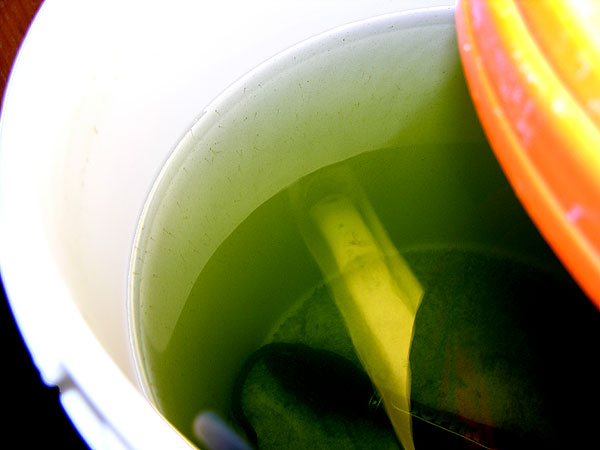 4 days post hatch at 10X
4 days post hatch at 10X 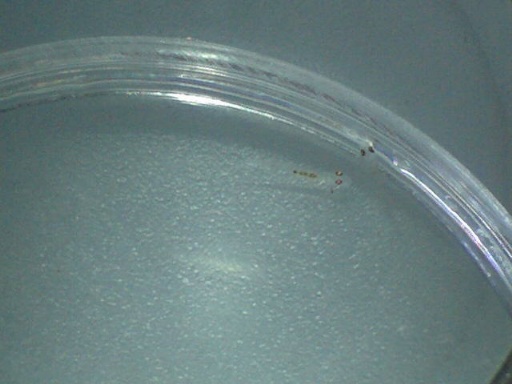 7 days post hatch (composite image at 60X)
7 days post hatch (composite image at 60X) 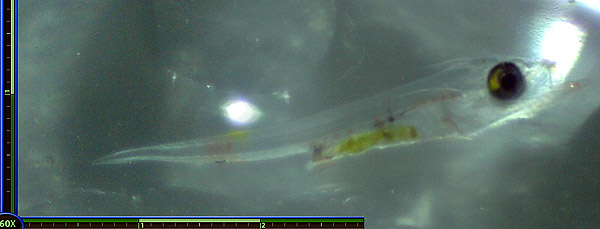 9 days post hatch at 10X
9 days post hatch at 10X 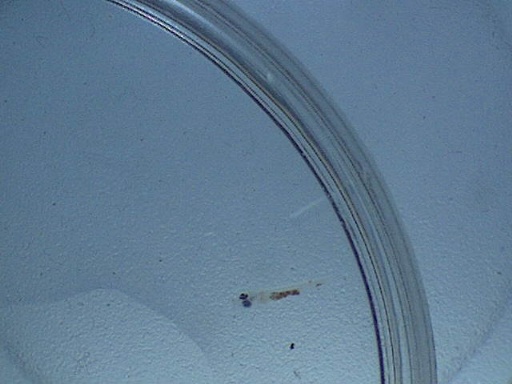 19.5 days post hatch at 10X
19.5 days post hatch at 10X 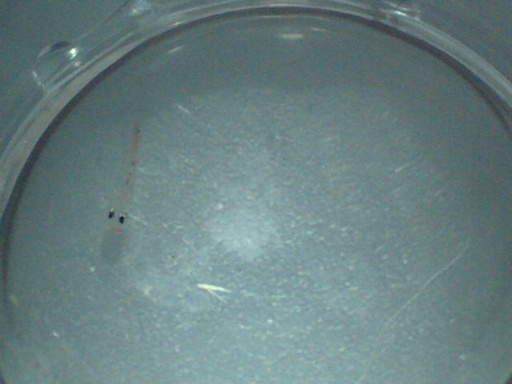 19.5 days @ 60X
19.5 days @ 60X 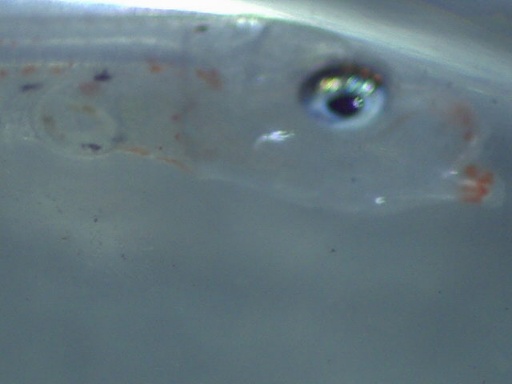 19.5 days @ 60X
19.5 days @ 60X 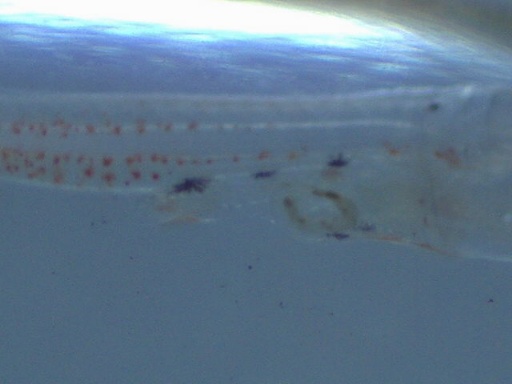
<message edited by mPedersen on Sunday, January 31, 2010 10:40 PM>